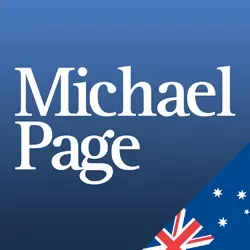Recruitment strategies in 2023 and beyond



The past few years have seen a major upheaval to business operations, work models and the recruitment landscape. But with many workplaces settling into a ‘new normal’, it’s time to put your focus on your recruitment strategy for the future.
What steps should you take to build your teams? How should you look to connect with qualified job seekers?
We examine the key considerations to make when planning effective recruitment strategies and hiring staff.
The rapid changes we’ve seen to job roles and ways of working look like they are here to stay, at least in part.
Given the uncertainty of the future, recruiting for flexible roles will be critical to ensuring you have the capability to shift priorities as business needs change.
In the coming months, seeking out candidates with broad expertise, an adaptable attitude and a willingness to tackle varied responsibilities could be the key difference maker in your recruitment strategy.
One of the major outcomes of people spending so much time at home over the past few years is that professionals are reevaluating what’s important to them in a career and the company they work for.
At the same time, with the shift to hybrid and remote work, the perceived value has dropped for commonly offered employee perks such as free food, a CBD office location with great views, ping pong tables and comfortable break areas.
Instead, many candidates are setting their sights on benefits such as work flexibility – including the ability to permanently work from home or remotely, with flexible hours. More candidates are also considering the ethos and social impact of a company rather than the employer brand or company culture before applying for a job.
In light of this, recruiting top candidates will come down to presenting an attractive employee value proposition – or EVP – grounded in flexibility and corporate social responsibility. If these factors aren’t part of the ‘package’ you present to candidates, you could risk losing the race for top talent.
Gone are the days when a phone call was all it took to connect with the most qualified potential candidates for a role. More than ever, a successful recruitment process encompasses many working parts – with candidates at the centre of your hiring process.
To find and connect with the best candidates, hiring managers will need to cover all bases. External recruitment expertise, social media, job postings, niche job boards, industry forums, webinars, an employee referral program, job fairs and more must work together to reach talent at every stage of their job search.
RELATED: Onboarding new hires with a remote team
New ways of working have proven that physical location doesn’t have to be a deciding factor when hiring new staff. Where the search for the perfect candidate used to be constricted by geography, companies now have the opportunity to tap into a global talent pool.
If the roles you are hiring for can be carried out remotely, the world is your oyster when it comes to finding the cream of the talent crop for your teams.
Need support with hiring committed, engaged team members? Talk to the consultants at Michael Page – Australia’s leading recruitment agency.
If you are an employer and would like to discuss your hiring needs, fill in the form below and we will call you back.
